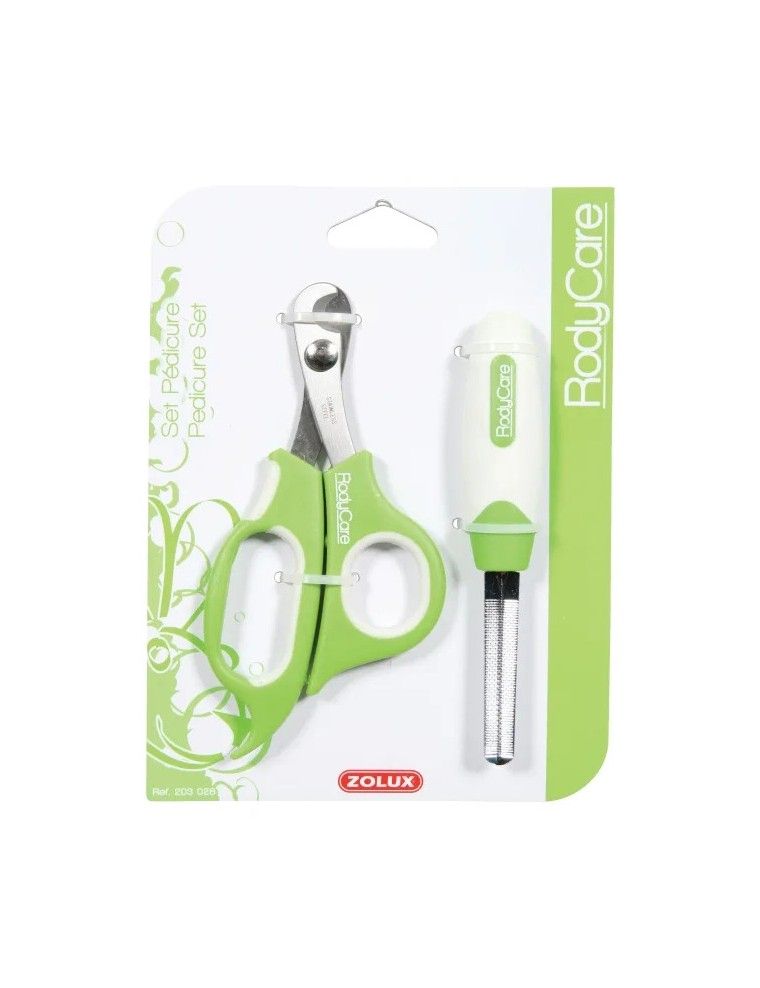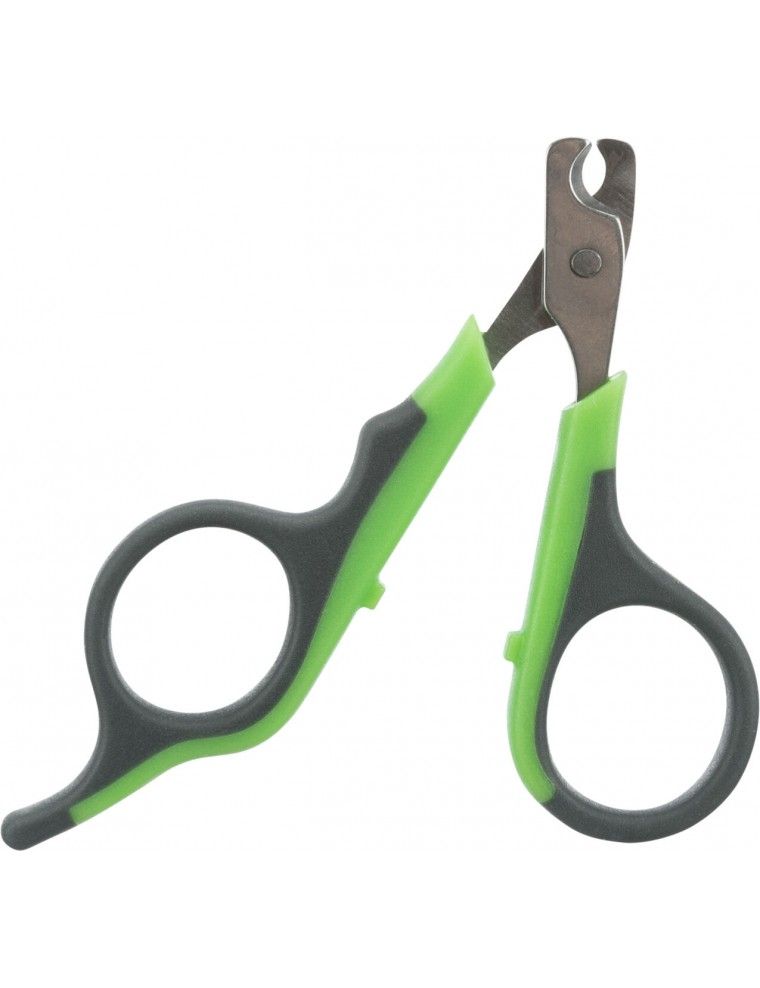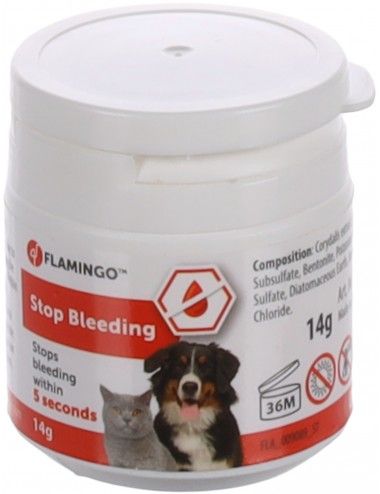- 3 in stock
Claws Rabbit
A Necessity for the Well-being of your Ball of Hair
Trimming your rabbit's claws is not just a question of aesthetics, it is above all an essential step for their comfort and health. Without this regular attention, your little companion could well end up with claws that are too long, hindering his movements or, worse, causing injury. But be careful, using the right tools and knowing the precautions to take is essential to avoid accidents.
Why and When to Arm yourself with Nail Clippers?
Your rabbit's claws, if they do not wear out naturally as in nature, require special attention. In fact, those on the front legs grow faster and require regular care to avoid any discomfort or injury. The pace of cutting will depend a lot on your rodent's lifestyle. An active rabbit, regularly exploring its space, will naturally wear out its claws and will require your intervention less often. For less active rabbits, a trim every 4 weeks is recommended to maintain their paws in good health.
Choosing the Right Tool: Trixie and Zolux to the Rescue
Le Petit Rongeur offers you a selection of nail clippers specially designed for rabbits, with two trusted brands: Trixie and Zolux . Choosing a suitable tool is the first step in ensuring a safe and comfortable cut for your pet. These recognized brands offer reliable products, designed for easy handling and precise cutting, minimizing stress for you and your rabbit. Don't forget to keep some styptic powder on hand to cover any eventuality.
Precautions to Take for Safe Cutting
Nail trimming can be a stressful time for your rabbit. It is therefore crucial to approach this task with gentleness and patience. Make sure you have good light to distinguish the vein and avoid cutting too close to it. In the event of bleeding, don't panic: a sterilized compress and styptic powder will help manage the situation. The important thing is to remain calm and reassuring so that your rabbit associates this moment with a positive experience.
Claws
A Necessity for the Well-being of your Ball of Hair
Trimming your rabbit's claws is not just a question of aesthetics, it is above all an essential step for their comfort and health. Without this regular attention, your little companion could well end up with claws that are too long, hindering his movements or, worse, causing injury. But be careful, using the right tools and knowing the precautions to take is essential to avoid accidents.
Why and When to Arm yourself with Nail Clippers?
Your rabbit's claws, if they do not wear out naturally as in nature, require special attention. In fact, those on the front legs grow faster and require regular care to avoid any discomfort or injury. The pace of cutting will depend a lot on your rodent's lifestyle. An active rabbit, regularly exploring its space, will naturally wear out its claws and will require your intervention less often. For less active rabbits, a trim every 4 weeks is recommended to maintain their paws in good health.
Choosing the Right Tool: Trixie and Zolux to the Rescue
Le Petit Rongeur offers you a selection of nail clippers specially designed for rabbits, with two trusted brands: Trixie and Zolux . Choosing a suitable tool is the first step in ensuring a safe and comfortable cut for your pet. These recognized brands offer reliable products, designed for easy handling and precise cutting, minimizing stress for you and your rabbit. Don't forget to keep some styptic powder on hand to cover any eventuality.
Precautions to Take for Safe Cutting
Nail trimming can be a stressful time for your rabbit. It is therefore crucial to approach this task with gentleness and patience. Make sure you have good light to distinguish the vein and avoid cutting too close to it. In the event of bleeding, don't panic: a sterilized compress and styptic powder will help manage the situation. The important thing is to remain calm and reassuring so that your rabbit associates this moment with a positive experience.
- 2 in stock
- in replenishment
Questions / Réponses
Couper les griffes d'un lapin est essentiel pour prévenir la douleur et l'inconfort qui peuvent résulter de griffes trop longues. Des griffes non coupées peuvent s'accrocher dans le tapis ou la literie, se casser, se tordre, ou même pousser en arrière dans les pattes du lapin, causant des infections ou affectant sa capacité à se déplacer correctement.
La fréquence dépend de la croissance des griffes du lapin, mais en général, elles doivent être vérifiées et coupées si nécessaire tous les 1 à 2 mois. Surveillez la croissance des griffes de votre lapin et ajustez la fréquence de coupe en conséquence.
Avant de couper les griffes, familiarisez votre lapin avec le processus en manipulant régulièrement ses pattes pour le rendre plus à l'aise. Gardez le lapin calme et sécurisé dans votre giron ou sur une surface stable. Utiliser une serviette pour l'envelopper peut aider à le rassurer et à prévenir les mouvements brusques.
Utilisez un coupe-griffes spécialement conçu pour les petits animaux. Vous en trouverez en vente dans notre boutique en ligne et chez les vétérinaires. Ils permettent une coupe précise et sûre, minimisant le risque de blesser le lapin. Évitez d'utiliser des coupe-ongles pour humains, car ils peuvent écraser la griffe et causer de l'inconfort.
Si votre lapin a des griffes claires, vous pouvez généralement voir la veine (appelée le "quick") comme une ligne rose à travers la griffe. Pour les griffes foncées, c'est plus difficile, et vous devriez couper petit à petit pour éviter de couper la veine. Si vous n'êtes pas sûr, demandez à un vétérinaire ou à un professionnel de vous montrer comment procéder.
Si vous coupez la veine par accident, cela peut saigner. Gardez du styptique en poudre (disponible chez les vétérinaires ou les animaleries) à portée de main pour appliquer sur la griffe et arrêter le saignement. Si vous n'avez pas de poudre styptique, de la maïzena peut également fonctionner en cas d'urgence. Si le saignement ne s'arrête pas rapidement, contactez votre vétérinaire.
Parlez doucement à votre lapin et maintenez-le doucement mais fermement pour le rassurer pendant la coupe. Après la coupe, offrez-lui des caresses et éventuellement une friandise pour associer l'expérience à quelque chose de positif. Cela peut aider à réduire l'anxiété de votre lapin lors des futures séances de coupe.


